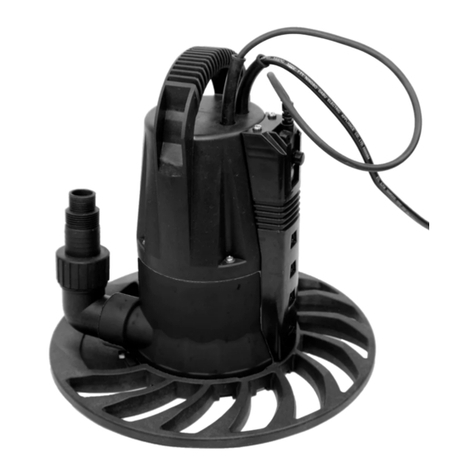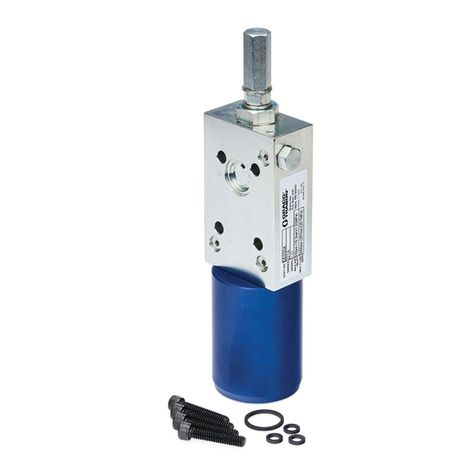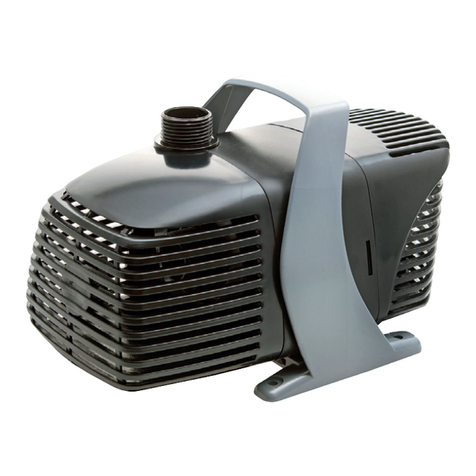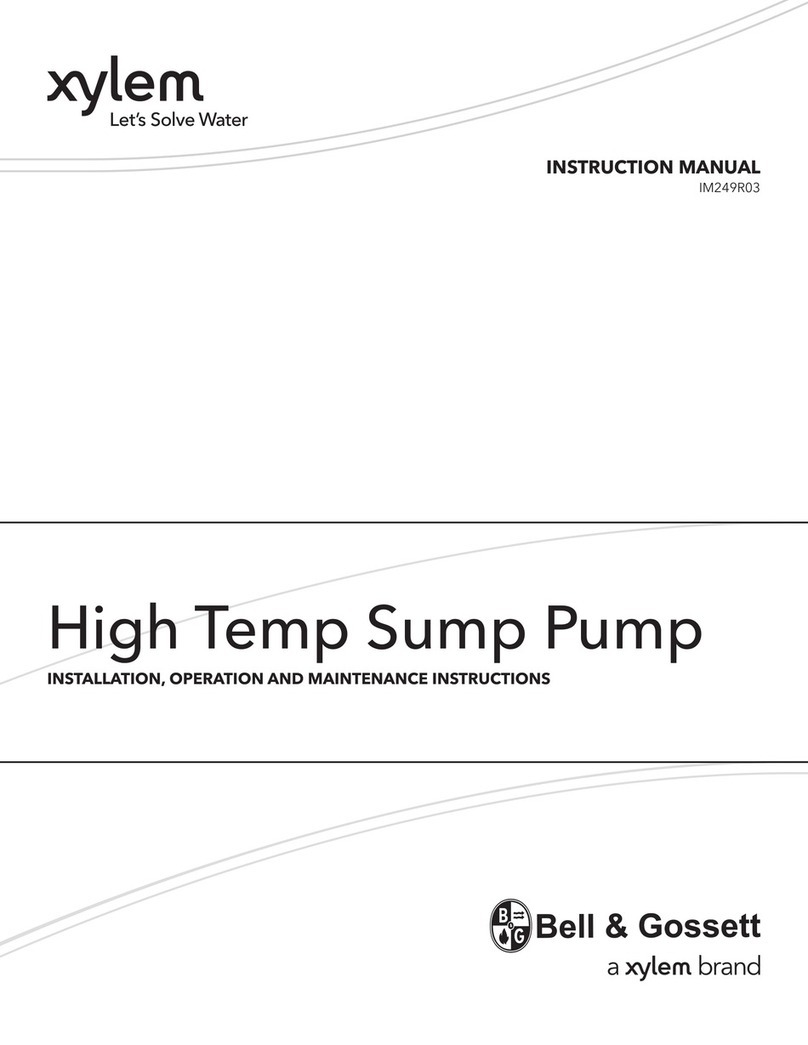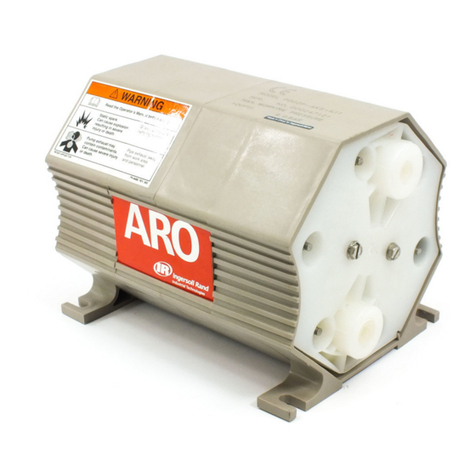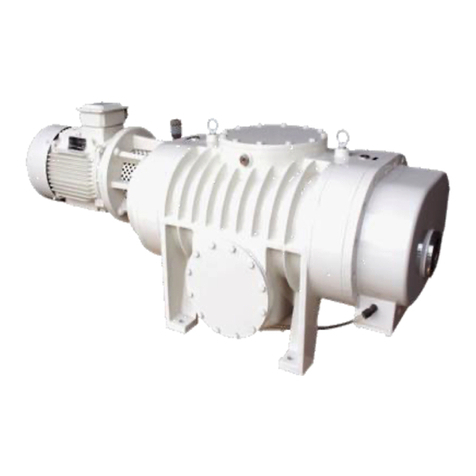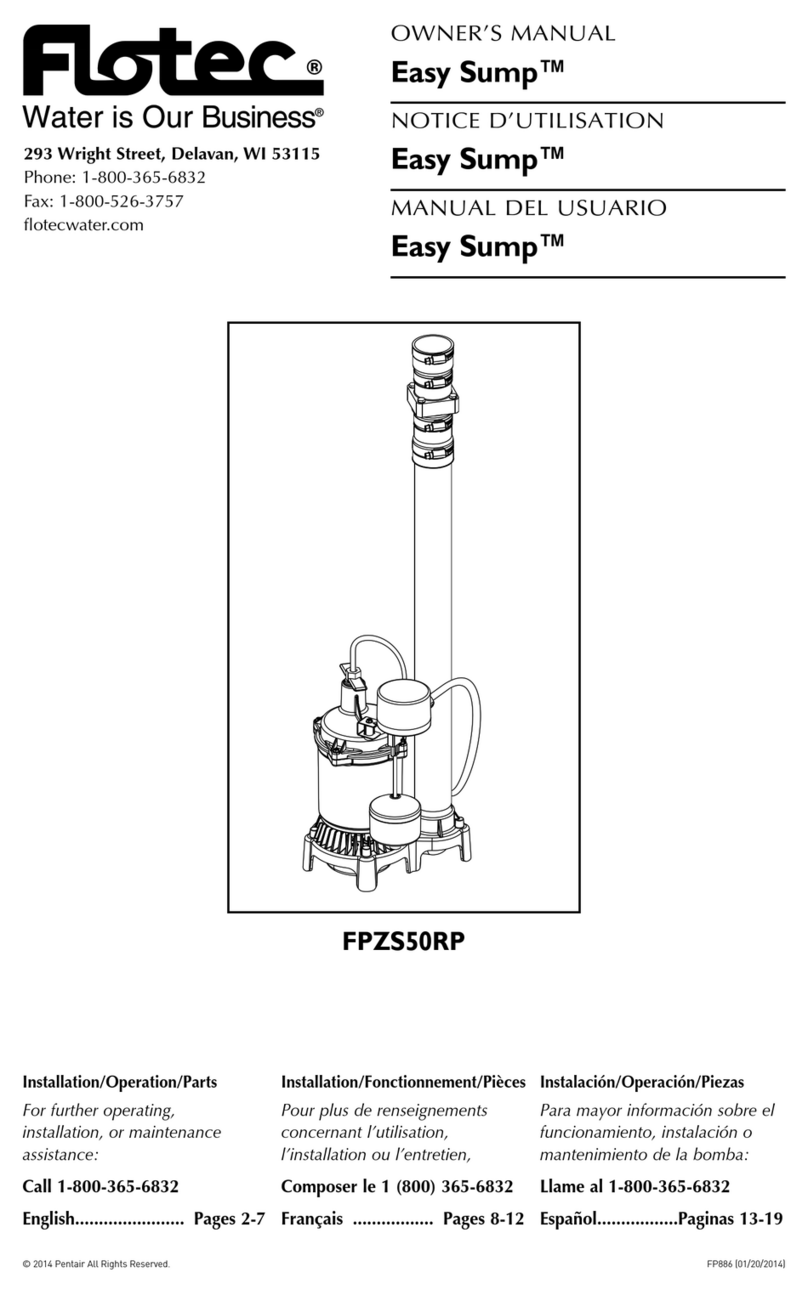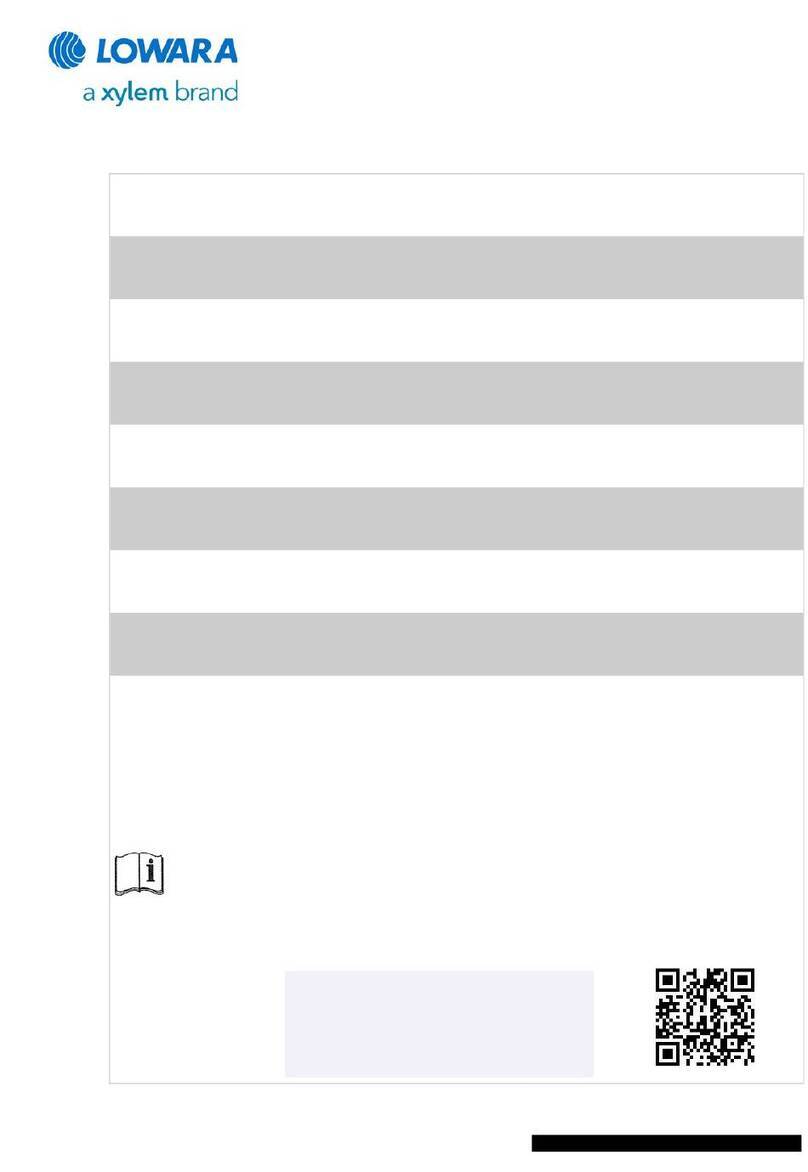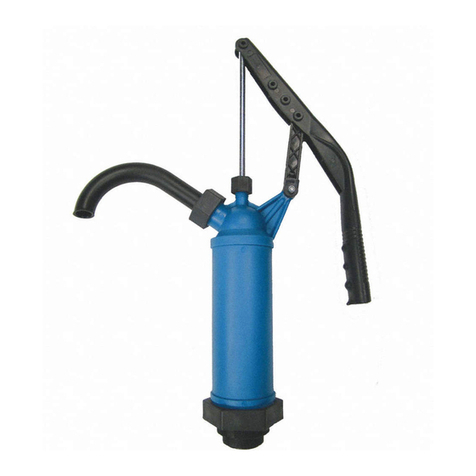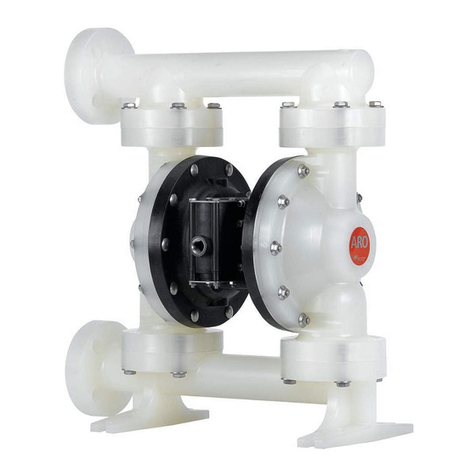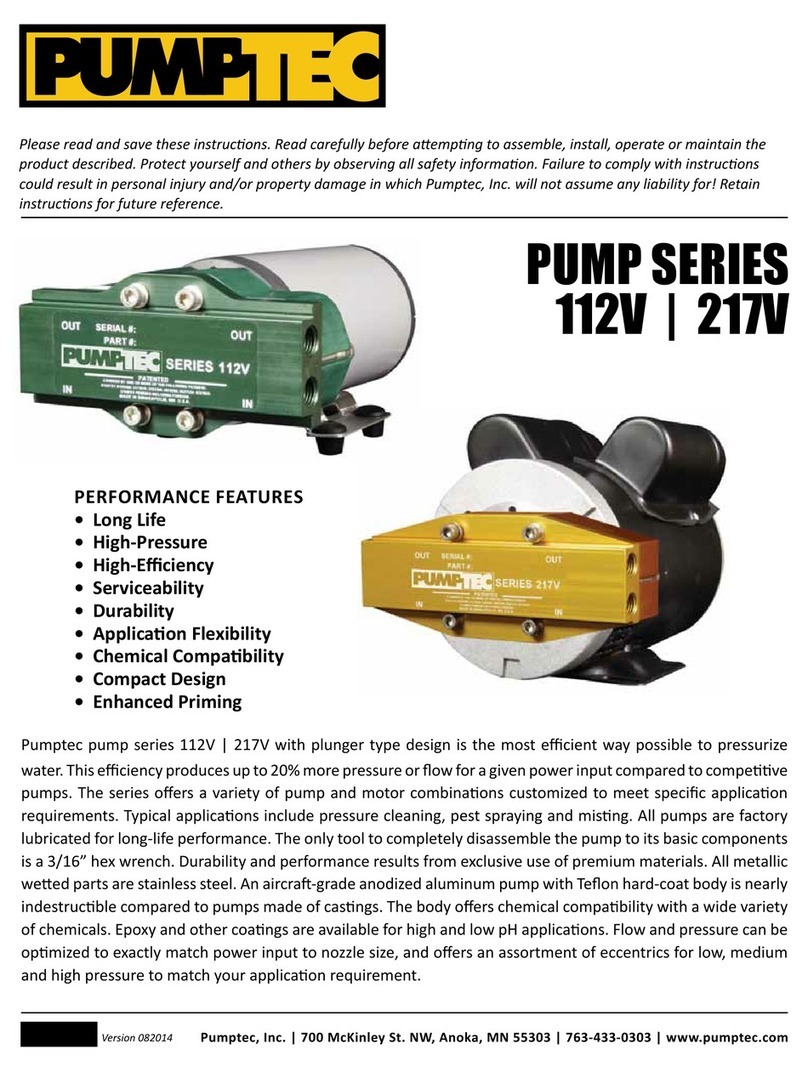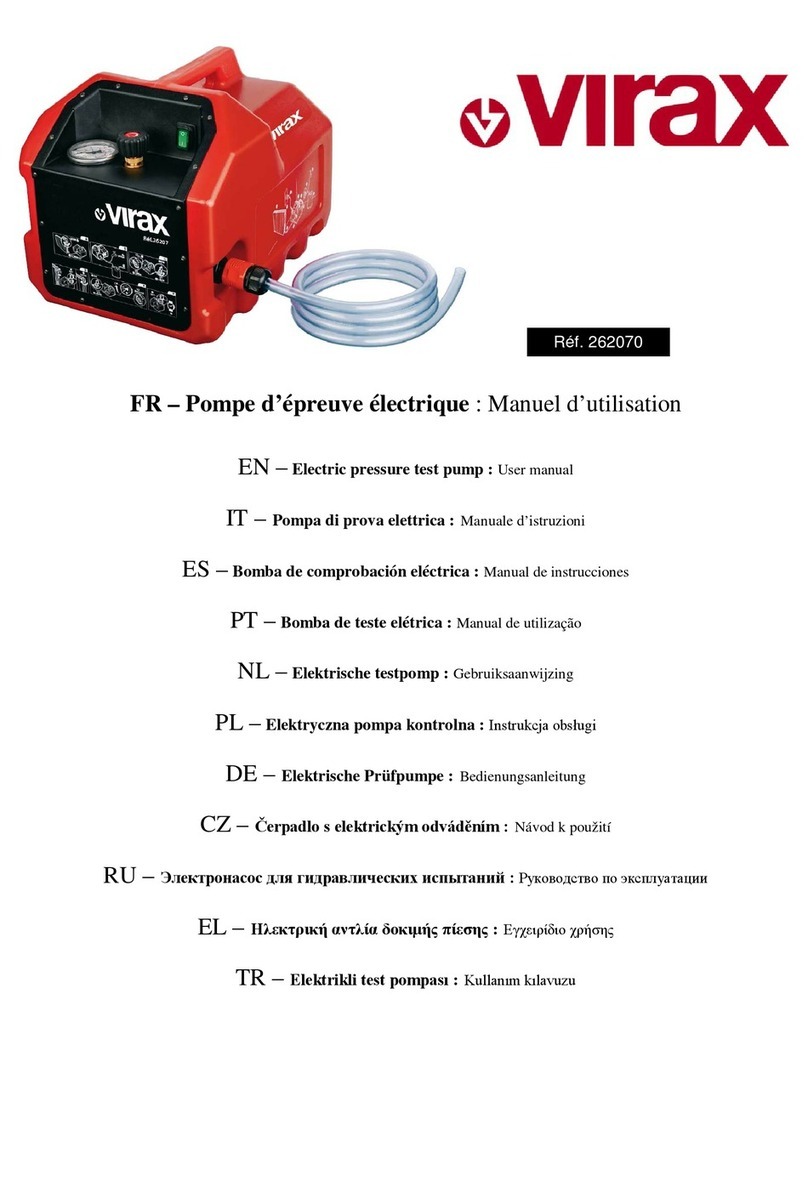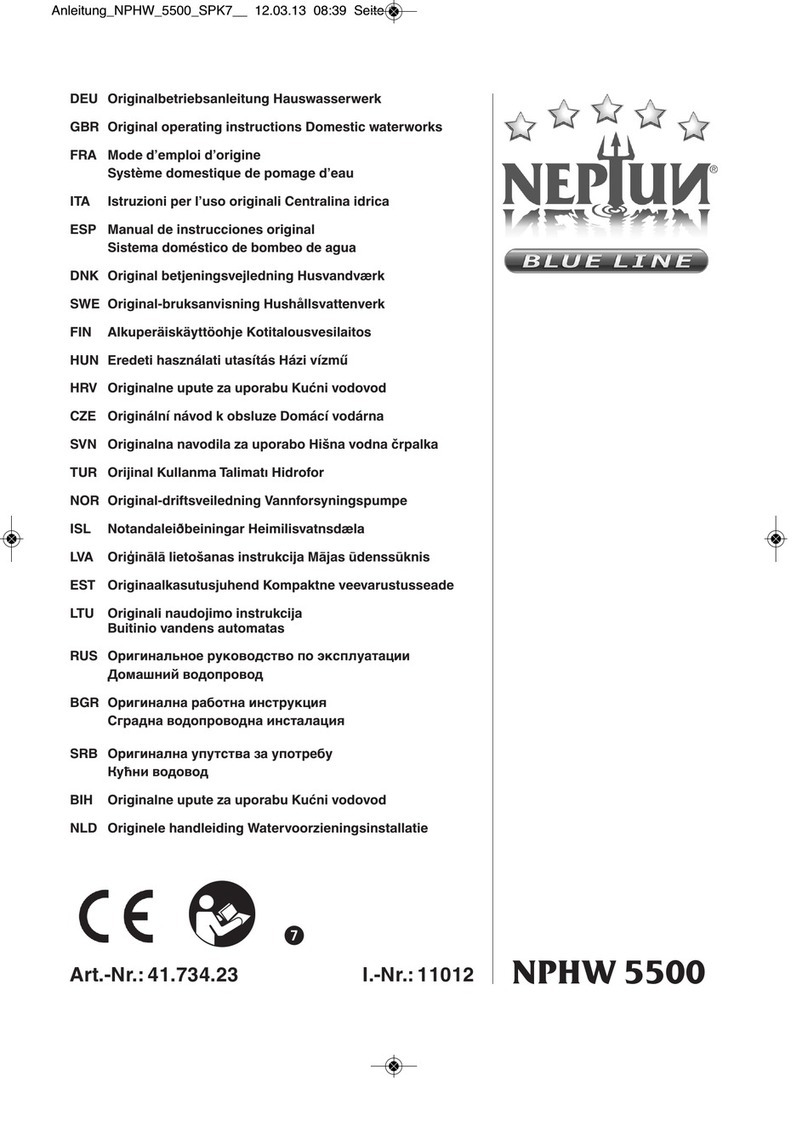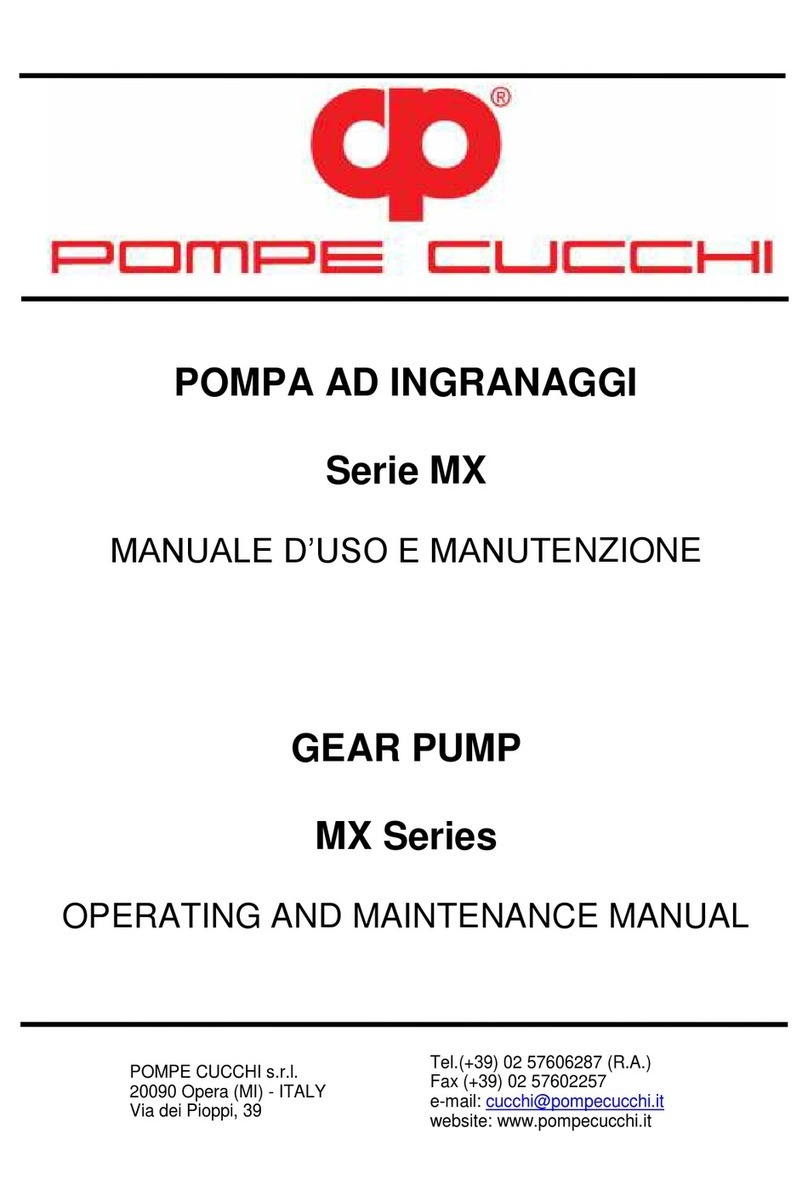Pompa ad Ingranaggi - Serie WPP, WPL
Gear Pump - WPP, WPL Series
26
1.4 NAME, TYPE
The pump standard execution is that with brass body, AISI 316 shafts, AISI 316L gears and
shafts, bearing bushes in graphite and ceramic/graphite/NBR mechanic seal. The complete
series covers different executions (AISI 316 body, gears in KK plastic) and different capaci-
ties. Moreover, executions with special mechanic seal or magnetic drive are also provided.
The pump identification is realized through an alphanumeric code (see the following exam-
ple):
- 0WLZ008/NZPFB00: pump type WPLZ, brass execution, rated capacity 8 l/min. at 1500
rpm (displacement 6,2 cm3/rev), shafts made of stainless steel, a gear in KK plastic, stan-
dard mechanic seal, equipped with brass safety valve, with bell housing for coupling with a
Size 80 motor.
1.5 NOISE EMISSIONS
- Reference standard: CEN/TC 197/SC3 N 21 E -fig.8- ISO 3744 on 6 positions
- Measured values:
1 - Equivalent weighted continuous acoustic pressure level
Leq = 80 dB(A);
2 - Maximum weighted instantaneous acoustic pressure
C (peak level) Lpc < 82 dB(C).
- Test conditions: When measuring noise, the pumped liquid (ref. to oil with 30 cP viscosity)
must be introduced into the testing system at a speed of less than 0.8 m/s into pipes. It
must however reach laminar flow regime (thus the speed must be related to the viscosity)
and the conditions outlined in this manual must be respected.
1.6 APPLICATION FIELDS AND LIMITS. ALLOWED AND NOT ALLOWED
USES
Each machine shall be used according to the type of application, operating conditions and
liquid characteristics provided in contract specifications. Each variation which alters the in-
tended use of the pump is forbidden and the User is fully responsible for it (e.g. the use of a
liquid which is corrosive to pump materials rather than the recommended fluid, etc.). For
variations in use within the application limits (e.g. fluid viscosity variations) it is advised to
contact the Manufacturer in advance.
The maximum operating pressure, for pumps in standard execution, is of 15 bar.
In any case, the use of “KK” or alike plastic gears to allow the pump to operate also
with poorly lubricating fluids, requires greater attention to avoid excessive or unex-
pected pressure loads.
It is absolutely forbidden to use the machine in hazardous environments (explosive
atmosphere, etc…), the use of hazardous substances (e.g. fluids with dangerous
gases), in critical conditions (e.g. abnormal temperatures, etc…), which are not sup-
plied with the pump.
For pumps and pump units intended to be used in potentially explosive environ-
ments, please read carefully “Additional instructions for the operation and manage-
ment of pumps and pump units intended to be used in potentially explosive atmos-
pheres (Directive 94/9/EC)”. In case of slipping of the magnetic coupling, the surface
temperature can reach 350°C in a few seconds; therefore, it is necessary to provide a
continuous monitoring of the temperature near the coupling.
Pompe Cucchi S.r.l. declines every responsibility for the consequences arising from an im-
proper use of the machine which does not comply with what prescribed in this manual or
specifically requested when ordering.
